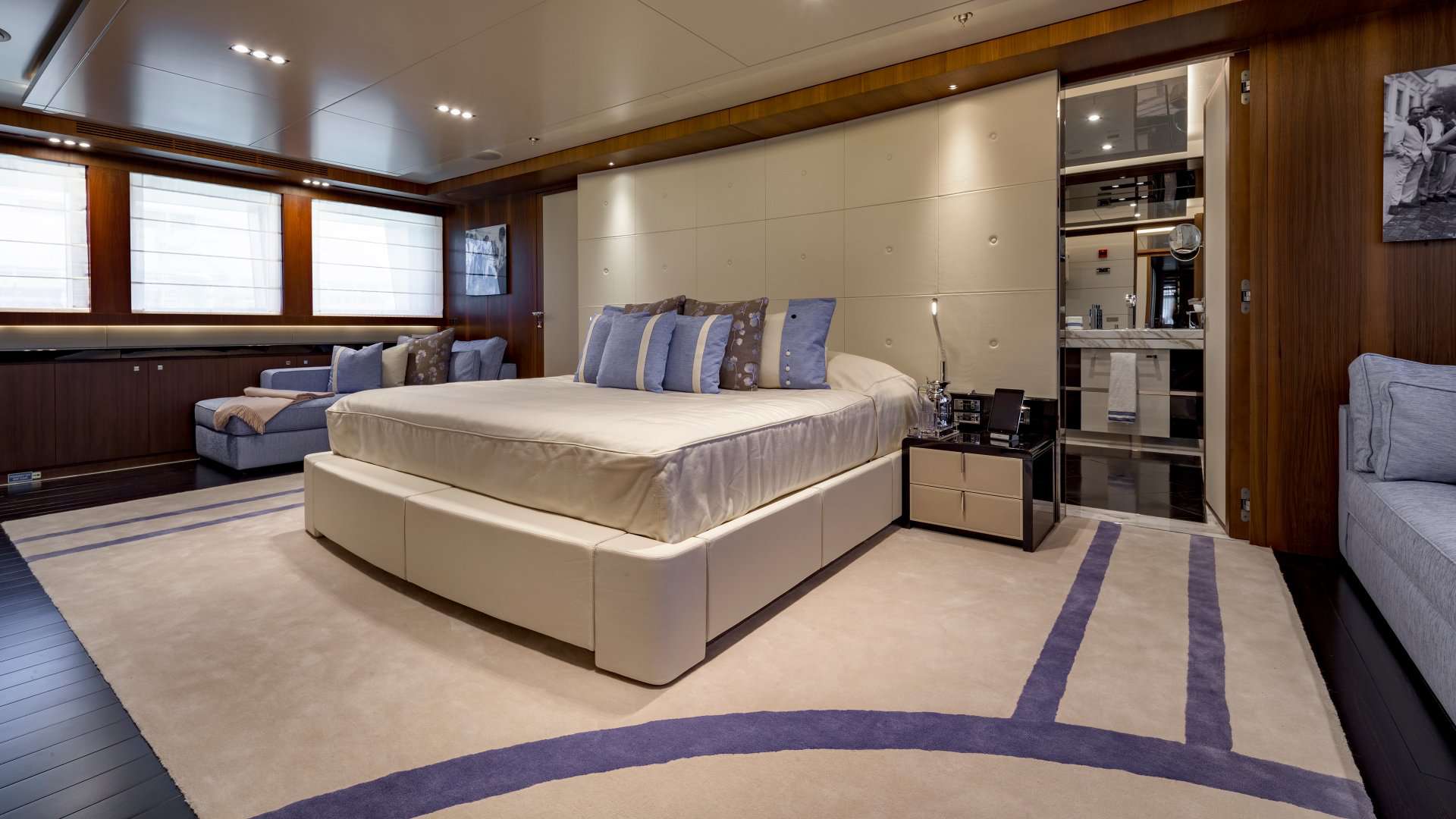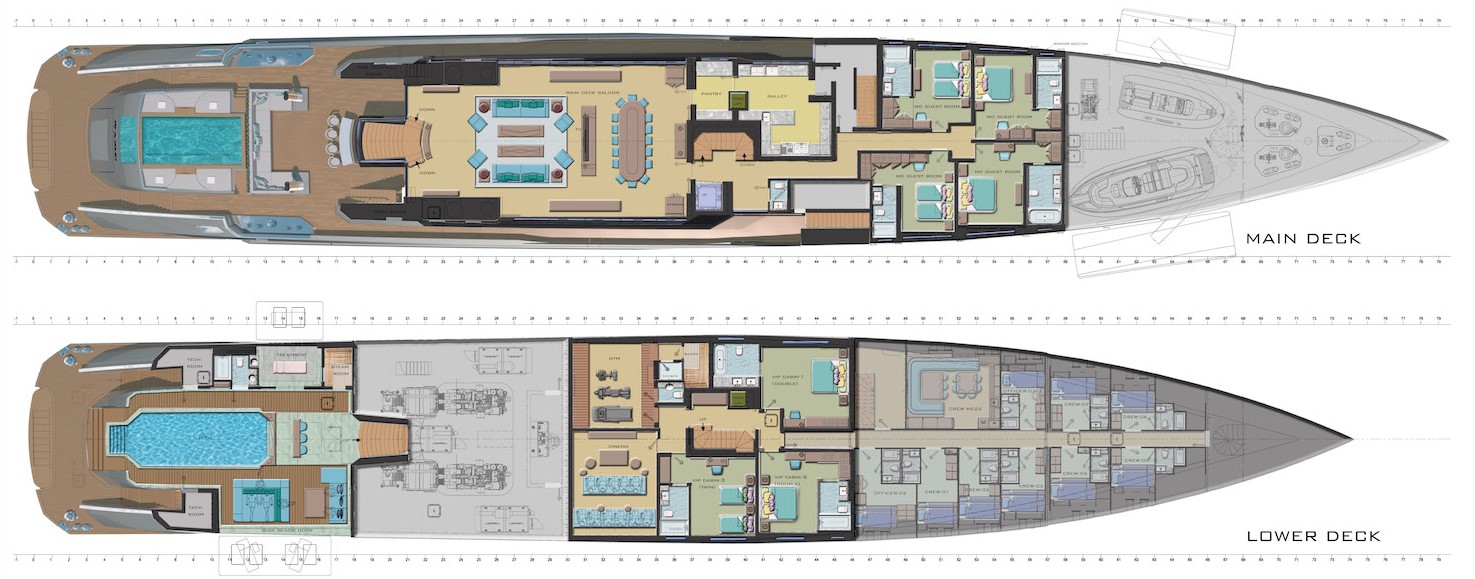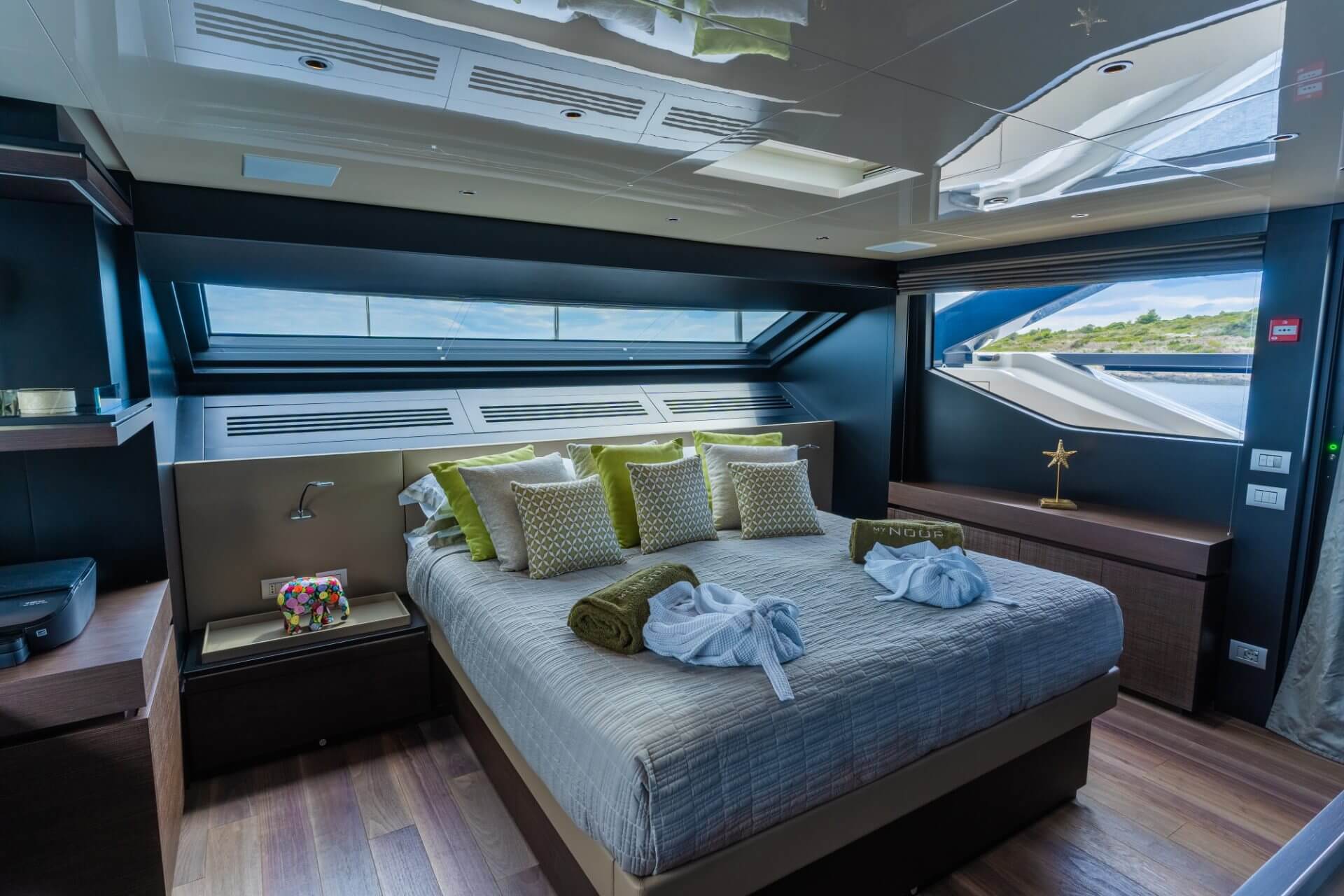The difference Between Cabin, Stateroom & Suite Accommodations on a Yacht Charter
Every superyacht is unique, with signatures from many different naval architects, designers and craftsmen, so it would not be fair to judge a yacht based solely on her length. After all, it is not all about the size – the crew also play a vital role in any successful charter experience, as well as the logistical support, the country where the charter takes place and many more.
But, since this blog targets to answer a specific question, focusing on the pros and cons of certain yachts lengths would be futile. The safest assumption would be that yacht length has a direct impact on whether a yacht accommodation would be classified as a cabin, a stateroom or a suite.

So, when is something considered a cabin, stateroom or a suite on a yacht?
A yacht cabin is the smallest possible type of accommodation on a yacht charter, with a stateroom being bigger and better equipped and furnished. Lastly, the suite is the biggest and most luxurious type of yacht accommodation that can be experienced.
Usually, this type of guest housing is reserved for yachts over 50 meters, because only they have enough length to accommodate all the necessary requirements of a space being regarded as a suit. The distinction between yacht cabin, stateroom and suite also depends on the integrated amenities as well as the design and decorations of the living area.
The size and appointedness of the ensuite play a vital role in distinguishing between a stateroom and the suite, as does the existence of a walk-in wardrobe, a private deck or a terrace, an office or anything else that is regarded as an extra feature.
The yacht length
The yacht length is the main deciding factor of whether your yacht charter accommodation will be considered a yacht cabin, a stateroom or a suite. Yachts below 30 meters usually do not have suites, only occasionally a master stateroom. On the other hand, yachts between 30 and 50 meters have enough to designate 2 staterooms or 1 suite, with cabins filling in for the rest.
Yachts above 50 meters and reaching 80-90 meters are long enough to have a master suite, as well as VIP staterooms and regular yacht cabins.

The beam of the yacht
The length of your yacht’s beam also plays a vital role in determining the size of your accommodations and categorising them accordingly. There is one rule that is almost set in stone and that is that the master accommodation on board is full-beam, on those yachts that have appropriate length; regular cabins are never full-beam.
This means that the majority of yachts over 30 meters will have a full-beam master stateroom, followed by regular yacht cabins. Only on yachts of over 50 meters do observe notice full-beam VIP staterooms, alongside full-beam master suites. Once again, regular cabins are never full beam.

Type of hull
Some hulls are deep, allowing for more room in the lower deck, while other hulls are more shallow, which allows for better performance, but also greatly influences the amount of room available for constructing guest’s accommodations. There are cases of yachts that come with staterooms, as well as cabins, on the lower deck, but suites are almost never located on the lower deck.
The furnishings of the accommodations
The general appearance of the guest’s accommodations also plays a major role in differentiating between what is considered a yacht cabin, a stateroom or a suite. Rich textures, artwork and glossy surfaces with ornamentailised framings are considered attributes of a stateroom or a suite, rarely found in cabins. More furniture (besides the berth), like chairs, sofas or vanity tables, determines the distinction between a cabin and a stateroom.
The design of the accommodations
Lastly, the design of the accommodation plays a vital role in the overall distinction between a yacht cabin, a stateroom and a suite. Walk-in wardrobes, private offices, private hydraulic side balconies, foyers or extra-large ensuites are always attributes of a suite. On the other hand, a stateroom has some ( but not all) of the abovementioned features, while cabins have none of these extra elements, consisting only of berths, regular wardrobes and ensuites, with an occasional vanity table and a chair.
Pullman berths
It is a rule of thumb that only cabins come equipped with pullman berths. This extra bed, often integrated into the walls so as to give a smooth impression of the cabin, can be prepared as a regular berth or when you have unexpected visitors on the yacht. Either way, an option of a pullman berth is great to have, because it offers more versatility when it comes to planning and allocating your charter guests. Staterooms and suites avoid using pullmans, instead focusing on using the extra space for improving the category of the accommodation.
Charter Yachts
We present to you the best selling yachts for charter in 2021. Slide through these different yachts, ranging from 20 to 80 meters in length, and choose the best option for you. If you have any questions regarding yacht charter, destinations & yacht support, contact us.
VIEW ALL CHARTER YACHTS








